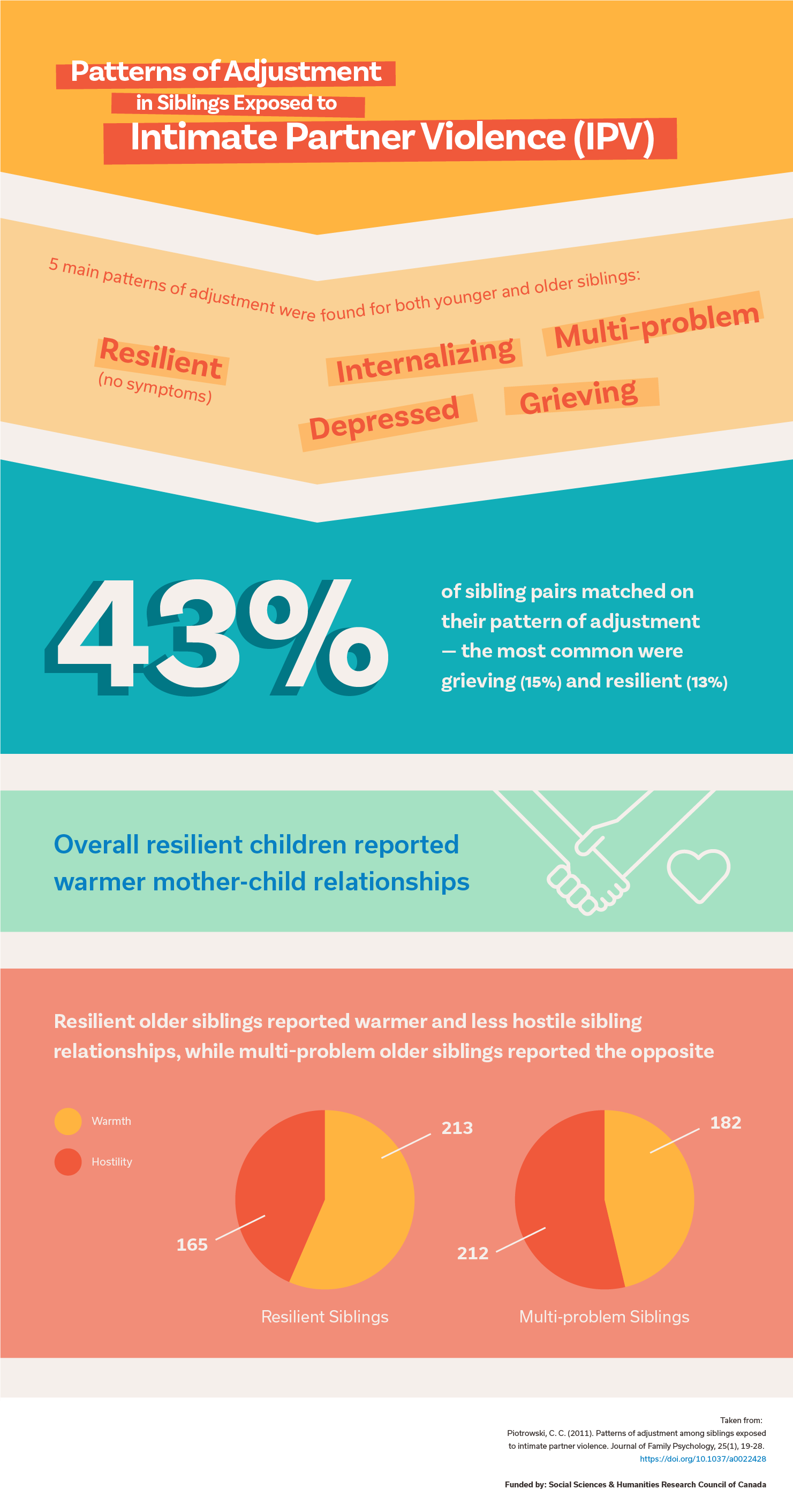Key Findings in Our Research
01. Siblings and Conflict
Siblings are one of children’s earliest teachers about how to get along with other children. Our research showed that siblings were careful about getting involved in conflict between their mother and their sister or brother.
Those who jumped into a parent-child conflict to support their sibling had warmer relationships overall. And they were learning positive social skills from these experiences—older siblings mediated with their younger brother or sister more often than with their mother—even though it may not feel that way to parents who are busy managing conflicts with their preschoolers.
Piotrowski, C. C. (1995). Children's interventions into family conflict: Links with the quality of sibling relationships. Journal of Early Education & Development, 6(4), 377-403. https://doi.org/10.1207/s15566935eed0604_6.
02. Siblings and Resilience
Siblings can help each other get through life’s challenges. We found that siblings living in households affected by domestic violence helped, comforted and shared with each other. Siblings with warmer relationships, and those spaced further apart in age, did these prosocial behaviors with each other more often. This research project showed that, even under difficult circumstance, siblings can offer each other support.
Piotrowski, C. C., Wiebe, R., & Cameranesi, M. (2022). Prosocial behavior between siblings exposed to intimate partner violence. Social Development, 1-16. https://doi.org/10.1111/sode.12589.
03. Siblings and Support
Siblings growing up together in a household affected by domestic violence deal with their circumstances in a variety of ways.
Our work showed differing patterns of adjustment, including resilience (showing no difficulties), internalizing (keeping to themselves), externalizing (acting out and being aggressive), depression (with lower self-esteem), grieving (sad with higher self-esteem) and multiple difficulties.
Siblings matched their patterns of adjustment 43% of the time; the most common shared patterns were grieving and resilient. These findings showed that including both (or all) of the siblings in the family, rather than just one child, is very important to ensure that children are receiving the help and supports they may need.
Piotrowski, C. C. (2011). Patterns of adjustment among siblings exposed to intimate partner violence. Journal of Family Psychology, 25(1), 19-28. https://10.1037/a0022428.
04. Siblings and Injury at Home
Sometimes school-aged siblings supervise each other when their parents are away. Our work has shown that younger sibling injury risk is lower when siblings have warmer relationships, even when children’s risk-taking behaviour was taken into account.
This is important for parents to know — if their children don’t get along very well, leaving them together may increase the risk for injury at home.
Piotrowski, C. C. & Warda, L. (April, 2021). An investigation of risk & protective factors for school-aged child injuries: The Influence of siblings. Presentation at the Society for Advancement of Violence and Injury Research 2021 Virtual Conference, Johns Hopkins University, Baltimore MD.
Piotrowski, C. C., McCarthy, J.-A., & Warda, L. (March, 2021). Beyond supervision: Linking sibling relationship quality and school-aged child injuries. E-poster presented at the Virtual Pre-Conference Global Injury Prevention Showcase for Safety 2022: 14th World Conference on Injury Prevention and Safety Promotion, Adelaide AU.




